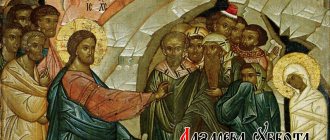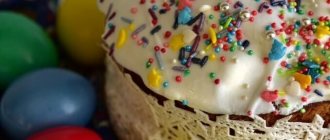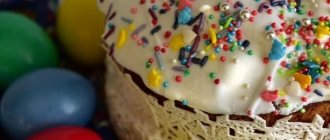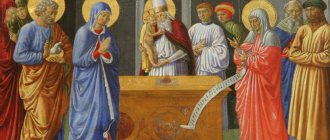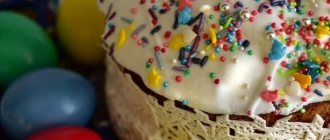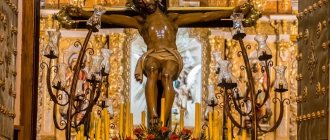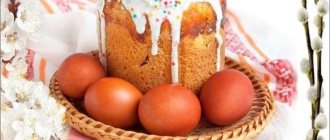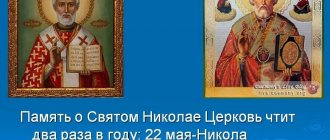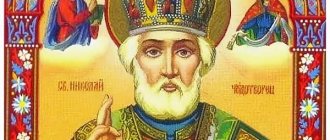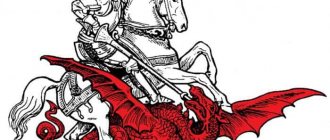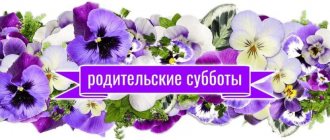Maundy Thursday - a traditional Slavic holiday. Maundy Thursday is celebrated once a year in the month of April, and the date shifts slightly every year. But invariably the time of purification falls on the week before the First Rusalia.
Items enchanted on Maundy Thursday
View
When is Maundy Thursday?
Our ancestors knew exactly which holiday Maundy Thursday came before. The day of purification is always celebrated in the week before the first Rusalia. Their period is unchanged - from April 16 to April 21, so calculating the date of Maundy Thursday is easy, starting from the days of the week. When is Maundy Thursday in 2022? Maundy Thursday falls on April 7 in 2022 . Clean Thursday Day is intended to prepare for the difficult period of Rusalia and the commemoration of the Ancestors.
Baking Easter cakes
It is believed that Easter cakes should be completely cooled when they are brought to church for lighting. Therefore, you need to think in advance when to bake them.
It's a good time to start preparing the main Easter dish without haste, but only after cleaning.
Some nuances that will help in baking Easter cakes:
- you need to knead the dough carefully and without haste;
- Do not knead or keep the base in a draft;
- you need good flour, which must be sifted 2 times;
- products for preparing dough should not be cold;
- if you are preparing cottage cheese cakes, the cottage cheese should be homogeneous, without lumps;
- raisins and candied fruits should be sprinkled with flour before adding to the dough for better distribution;
- It is recommended to cover Easter cake molds with parchment greased with sunflower oil;
- You need to place molds of the same volume in the oven at the same time so that the cakes brown at the same time;
- if the dough in the mold has risen too much, you need to cover it with foil or paper;
- If the tops of the Easter cakes burn, you can cover them with a damp cloth or place a container of water at the bottom of the oven;
- The finished cakes must be cooled completely and not put into a bag.
To keep baked goods fresh until Sunday, you can put Easter cakes in a bread bin. A saucepan with a lid will do. The main thing is that the dishes are clean, free of crumbs and moisture. You can wrap the Easter cakes in cotton or linen cloth and place them in a cool place.
Clean Thursday - cleansing from past troubles!
The Slavs considered the Rusal period to be a turning point, mystical and dangerous. With the arrival of spring, life always begins again - the seasons change, nature awakens, the souls of ancestors return to Earth. According to popular beliefs, it is during Rusalia that a person can encounter the spirits of the dead. In order to properly honor your ancestors and not fall under the temptation of mermaids, you must be pure in both body and soul. Therefore, if you adhere to Slavic traditions, Maundy Thursday cannot be missed! This is the time when a person not only cleanses himself of past troubles, but also protects himself from possible misfortunes in the future.
Cleaning the house
It is imperative to create cleanliness before Easter. According to tradition, you need to do this immediately after waking up. The most important thing is to have time to wash the windows and floors before dark. You can clean all the dishes and wash your clothes.
They say that starting from the fifth day of Holy Week, you cannot clean up. Therefore, you need to get rid of the mess at home and throw out all the trash on Thursday. It is customary to help your parents with cleaning.
Advice! Cleanliness should be not only at home, but also in the soul. Don’t make empty promises, don’t deceive your family, do only good deeds.
Our grandmothers also cleaned the house and yard very carefully, as they revered these Maundy Thursday traditions and believed in them very much.
What should you do on Maundy Thursday?
It is not entirely correct to ask about how to properly celebrate Maundy Thursday. This is not the kind of holiday that modern people are accustomed to. On this day there are no noisy celebrations, and time is devoted to work rather than rest . But this work is certainly joyful! On Maundy Thursday, housewives not only clean the house, but also observe an ancient Slavic ritual.
Many village grandmothers still retain knowledge of what they do on Maundy Thursday. From them we learn this:
- You need to wash yourself, preferably twice - in the morning, before starting all your work, and in the evening after cleaning.
- Tidy up your home - get rid of old things, thoroughly wash the floors, wipe the dust in all the far corners, don’t forget to look in the closets. No dirt should be hidden anywhere in the house! After all, tangled pieces of thread or clouds of dust are not just depressing to the eye, they can be a sign that there is no other, spiritual purity in the house. And then illnesses and troubles are not far away.
- Prepare Thursday salt. Each family member takes a pinch of salt and pours it into a common bag. This salt should be stored all year, it is considered a cure for many diseases. Separately prepare black salt, which is baked with bread. This salt is made only on this day. In our article “Thursday salt: what it is and how to prepare” you can find out the recipe for such Thursday salt.
- Clear the house of bad thoughts. While cleaning, you can open the windows wide, walk around the house with a charmed candle, or fumigate the space with medicinal herbs.
History and meaning of the holiday
During the entire Holy Week, Christian believers remember the events preceding the torment of Christ on Calvary and his subsequent resurrection. Maundy or Maundy Thursday is dedicated to the memory of the Last Supper. For this meal, Jesus gathered a dozen of his closest followers - the apostles. The history of the events of this evening is set out in all the texts of the Gospel.
During the meal, Jesus predicted the betrayal of one of his 12 disciples. Also, at the beginning of the Last Supper, he washed the feet of the apostles, showing them his humility and disposition. The history of the holiday is directly connected with the sacrament of Holy Communion - the Eucharist. Until this day, on the Jewish Passover, such a tradition did not exist. But during the meal, Jesus broke bread and poured wine for the disciples, inviting them to taste the food with the words: “Take, eat, this is My Body, which is given for you, and My Blood, which is shed for you.” Having sanctified the sacrament of eating food, Christ showed the direct path of unity with God, communion with his gifts, to eternal life and salvation.
Folk signs of Maundy Thursday:
- Leaving dirt and disorder in the house on this day means quarrels, illnesses and troubles for the whole next year.
- To attract material wealth, on Maundy Thursday you need to count all the money in the house three times in a row and rearrange the furniture.
- To remove the evil eye, you need to wash your face before dawn, saying: “I’m washing off what they put on me, what’s bothering my soul and body, everything is washed away on Clean Thursday. Vicky duviks are now duviks.”
- To attract the attention of men, girls need to say while washing: “As Maundy Thursday is bright and red, so I, the red maiden (name), will be beautiful for everyone. Vicky duviks are now duviks.”
- On Maundy Thursday you can see the Brownie. To do this, you need to go up to the attic with a candle at night. If the Brownie seems furry, the owners will live in abundance. If Domovoy is thin and naked, it means difficult times are coming for the family.
- In order for the Brownie to protect the livestock, on Maundy Thursday you need to put a treat under the corner of the house with the words: “Alien Brownie, go home, and your Brownie go after the cattle, herd the cattle.”
history of the holiday
According to biblical tradition, three days before the crucifixion, Jesus gathered the apostles for the Last Supper. In his teachings, Christ argued that one must lead a humble life and love one's neighbor. So that evening the Savior washed the feet of those gathered and shared bread and wine with them.
Moreover, the Bible says that it was at that meeting that Jesus told the disciples that one of them would soon betray the teacher. The Lord foresaw the sin of Judas, but chose not to name him. Unfortunately, this is what happened. On the night from Thursday to Friday, Judas sold Jesus for 30 pieces of silver. None of the researchers could explain why the devoted disciple did this to the Savior. There are several versions. One of the most popular is that Judas became disillusioned with Jesus as a teacher. According to another hypothesis, the traitor wanted to see if Christ could be saved and demonstrate his abilities. In addition, a number of historians believe that in this way the apostle hoped to raise an uprising in Jerusalem.
However, believers revere this day. It is read that on Maundy Thursday there is renewal and forgiveness before the terrible execution of Jesus Christ.
Holy Week
How to spend the last week before Easter
Traditions
On Maundy Thursday, Orthodox Christians certainly perform ablution. But this should be done not in the evening, as many believe, but early in the morning - before sunrise. It is believed that you need to wash your face using silver utensils; even a spoon will do. Just scoop up some water and pour it on your face. The ancestors believed that in this way one could be cleansed of sins.
After washing and bathing, they thoroughly cleaned the houses: they wiped off the dust, washed the floors and windows, looking into all corners of the home. It was believed that everything bad goes away from life along with room dust.
Also on Maundy Thursday it is customary to count all the money. And not once, but three times - before sunrise, at noon and after sunset. This tradition “attracted” wealth.
And the main tradition of Maundy Thursday is baking Easter cakes and painting eggs. The dough was made on Thursday morning, and in the evening, after reading a prayer, they got down to business. By the way, the quality of the baked goods determined what year it would be. If the Easter cake turned out lush, expect happiness and prosperity. If callous - to illness and poverty.
Photo: pixabay.com
We offer 3 ways to prepare Thursday salt
- Mix wet salt with the pulp of black bread. Place the mixture in the oven and leave until hardened.
- Place the salt in the pan and stir until it turns dark. By the way, if the salt starts to crackle a lot, it means that the person who fries it has been jinxed.
- Tie the salt with the black crumb into a cloth and place it in the ash. Wait for the salt to blacken and harden.
This salt is considered a strong talisman; it is used to season all Easter food. Such salt is a helper against all diseases and is kept behind the icon.
Before spring sowing, salt must be mixed with the seeds, then you can expect a good harvest. You can also read more information in the article .
What events do we remember on Maundy (Maundy) Thursday?
They are described by all the Gospel writers, although with varying degrees of detail:
- the last meal of Jesus Christ with his disciples; It was already known that the Jews were looking for the Lord to betray the Roman authorities, so a small community of His disciples gathered secretly; hence the name of the meal, the Last Supper;
- the last conversation of the Lord with the Apostles;
- the prayer of Jesus in Gethsemane, the last hours before His arrest;
- the capture of the Lord by the Jews, the trial by the high priests, then by Pilate.
Vasily Petrovich Vereshchagin. "Prayer for the Cup."
Last Supper
This is the event on which the attention of all four Evangelists , since the main Christian Sacrament - the Eucharist - is established here.
Place
It is known that to prepare the Supper, the Lord sent two disciples, warning them to turn to “the man carrying a pitcher of water.” Many interpreters believe that this could be a conventional sign, and that the owner of the house himself could be one of the admirers of Jesus.
The house stood on Mount Zion, it has survived (in a rebuilt form) to this day, belongs to the state and is open to the public. Over the centuries, it was owned by both Christians (Catholics) and Muslims.
The Upper Room of Zion is a special place where, in addition to the Memorial, the following also took place:
- the appearance of Christ to the disciples after the Resurrection;
- election as Apostle St. Matthias;
- Descent of the Spirit on the Apostles;
- there is a possibility that the first Apostolic Council was held here (around 42)
Last meal time
The holy fathers also drew attention to the fact that the Evangelists have different information about this:
- St. Matthew , Mark, Luke report that it took place on “the day of unleavened bread, when the Passover lamb was to be slain” (Luke 2:27), thus we are talking about the Jewish Passover, which the Lord celebrated, since “not to be broken... the Law has come , but to fulfill” (Matt. 5:17);
- and St. John the Theologian says that the supper took place before the celebration of Passover.
Some see a contradiction between Evangelists here. However, it is apparent. St. John clearly says that the Passover of the year in which the Savior suffered fell on Saturday - a day of rest, when any work was strictly prohibited. According to tradition, “inaction” began already on Friday evening, so the slaughter of the lamb was possible only a day earlier, that is, on Thursday, which was the “first day of unleavened bread.” Thus, we are really talking about the fact that the Lord and His Apostles gathered for a festive supper - the Seder.
Feat of humility
This episode is mentioned by one St. John: Before the meal began, the Lord did something strange. Having taken off his outer clothing, He, like a servant, washed the feet of each of the Apostles, kneeling before him. John the Theologian writes that Peter, the most zealous and ardent, could not stand the humiliation of the Teacher:
"God! Should you wash my feet?
(John 13:6).
And he receives the answer - that the meaning of the event will be understood “after”.
However, it was immediately clear to one of the twelve - Judas, who had already agreed with the high priests when and where he would betray the Teacher to them. The Rabbi knew about this, and the practically former Apostle understood that Jesus knew. If only because Christ said it directly more than once.
His self-denial was an attempt to reach Judas, to show that his repentance could be accepted at any second, for the Lord loves him - no matter what.
It is no coincidence that immediately after washing His feet He was “troubled in spirit,” grieving over the traitorous disciple:
“And he bore witness, and said, Verily, verily, I say unto you, that one of you shall betray Me.”
(John 13:21).
The Lord will not tell the disciples until the end who the traitor is - of course, they would have immediately stopped Judas. But Christ waited until the last minute to see if the traitor’s heart would change.
Now the Church mournfully sings:
“When the glory of the disciple is enlightened at the thought of the supper, then the evil Judas, sickened by the love of money, becomes darkened, and betrays the righteous Judge to the lawless judges. See, the steward of the estate, who used strangulation for these sake! Flee the unsatiated soul, such a teacher who has dared: Who is good of all, O Lord, glory to Thee.”
And every Christian before Communion repeats: “... I will not kiss You like Judas...” , testifying to his sincerity.
last supper
What did you eat during your last meal?
This is indicated by many details contained in the Gospels, which were quite understandable to the Jews of that time:
- “salted”, where Christ dips the bread - a ritual bowl of salted water, an indispensable attribute of the festive table; it symbolized the tears shed by the Jewish people in Egypt;
- on the table there was also a dish with herbs - garlic, onions, horseradish, chicory; they also symbolized the bitterness of the people who were persecuted by the Egyptian pharaoh;
- there was also a paste made from nuts, pomegranates, dates - its reddish color was reminiscent of the clay of the bricks that the Jews made in slavery;
- obligatory attributes were unleavened bread (that is, not made with leaven, just a mixture of flour and water) bread - now known as matzo - and wine diluted with water - four cups;
- finally, there was also sacrificial lamb meat on the table; he was usually slaughtered in the temple courtyard after 12 noon; at the same time, the blood of the lamb was accepted by the priests and poured out at the foot of the altar; then the meat was fried over the fire at home.
The course of the Passover ritual meal itself should have looked like this:
- after the prayer, the elder at the table took the first cup of wine, offered it with thanksgiving to God, and then passed it around to everyone present;
- then the younger member of the family had to ask the ritual question: “What does all this mean?”; followed by a story about the exodus of the Jews from Egypt, psalms were sung; everyone ate bitter herbs until tears appeared in their eyes, similar to those that the Israelites shed;
- after the second cup raised with prayer, the elder at the meal blessed the unleavened bread; dividing them among everyone;
It was at this moment, obviously, ap. John asked the Teacher who was His traitor. Many are perplexed - why didn’t the Apostles recognize him, since the Lord, having said that this was the one who accepted bread from His hands, immediately gave a piece to Judas? Meanwhile, everything is simple: because the Lord gave bread to everyone. In other words, He did not answer the question of the beloved disciple. Or maybe he answered. Didn’t His disciples betray Him by fleeing after being arrested?
- then the family consumed the lamb, after which the third and fourth bowls followed in a circle, which completed the meal; everyone went out into the street, praising God with songs.
At first glance, the description of the Last Supper of the disciples of Christ is to some extent indeed similar to the “Seder Pesach”. However, none of the Evangelists mention the main part of the seder, the lamb. The Apostles also do not say a word that any of them went that day to the Jerusalem Temple to slaughter a sacrifice.
Last Supper. Fresco from 1312. Catholicon of Vatopedi Monastery. Athos
Thus, it is clear that the main Passover tradition of the lamb has been broken. Or is it still fulfilled?
Eucharist
The shortest but most succinct answer about the reason for the absence of the “most important thing” at the “Seder” of the Apostles is given by St. Paul, by the way, did not attend the Last Supper, for his appeal to the Lord happened much later:
“Our Easter, Christ, was sacrificed for us”
(1 Cor. 5:7).
Apparently, after the second cup, Jesus, instead of the ritual words of blessing the bread (or maybe after them), says completely different ones:
“...this is My Body, which is given for you”
(Luke 22:19).
And then, in a completely different way than is customary, the words of the blessing of the cup of wine sound:
“Drink of it, all of you, for this is My Blood of the New Testament, which is shed for many for the remission of sins.”
(Matt. 26, 27-28).
Now these words are pronounced by the priest who is performing the main Sacrament - the transfusion of bread and wine into the Body and Blood of the Savior, which first took place during that Last Supper.
“What does all this mean?”
But then the Apostles still do not understand what “Blood of the New Testament” means and why the custom was violated. They do not realize that the Paschal Lamb is the Lord Himself, giving his life for people.
So the question: “What does all this mean?”, and not a ritual one, could follow after the end of the meal itself. Because further, instead of telling how the Apostles left the house singing songs, as was customary, the Evangelists cite the words of Christ’s conversation with them. According to St. Mark, Matthew, Luke, He says to them:
- about His future suffering;
- warns of coming severe temptations - tests of their faith (“I will strike the shepherd, and the sheep will be scattered”), which they cannot withstand without God’s help.
Three of the four authors of the Gospels write about how zealously the disciples rejected the very possibility of renouncing Him, especially Peter (this would happen to him in a few hours!), how they were ready to defend Him with weapons, how depressing Christ was by their lack of understanding of what was happening. His words are filled with sorrow about the weakness of people who think only about earthly things: “Enough is enough,” “Get up, let’s get out of here.” That is, it is useless to explain anything...
Only the beloved disciple of Christ, St. John the Theologian preserved much more of the words of Jesus spoken by Him in those last hours before being taken to be tortured. By the way, John was the youngest of the disciples. The fact that it is his Gospel that contains the most detailed answer to the question “What does all this mean?” - can be considered symbolic.
New commandment
The words of the Lord, which have come to us thanks to the Gospel of St. John the Evangelist, they say:
- about the coming glory of the Son of Man;
- about the future Descent of the Holy Spirit;
- but the most important thing that the Savior says to the Apostles, frightened by His words about impending humiliation and execution, is that He goes to death out of love for people.
Imitating Him in love - for God, for people - is the shortest path to the Kingdom of Heaven. Jesus repeats over and over again:
“As the Father has loved Me, I have loved you; abide in My love. If you keep My commandments, you will abide in My love, just as I have kept My Father’s commandments and abide in His love... This is My commandment, that you love one another, as I have loved you. Greater love has no one than this, that someone lay down his life for his friends... This I command you, that you love one another...” (John 15).
At that moment they will not understand - in a few hours the zealous Peter will draw his sword in defense of the Rabbi. He will be completely lost - when the Lord heals the slave he wounded, he himself will surrender to the tormentors.
Artist Fra Beato Angelico
Later, after the Resurrection, the Ascension, when the Holy Spirit overshadows the disciples, they will understand God’s love, become Her chosen vessels, and by their example and prayer they will try to help others achieve this measure. And for many of us, a lifetime is not enough to get to the essence of the Lord’s words.
Coming Sacrifice
The fulfillment of the destined was approaching. Following the Jewish tradition, Christ and his disciples “singed and went to the Mount of Olives” (Mark 14:26). This, as the Evangelists unanimously point out, was the favorite meeting place of the community of Jesus' disciples. And now the Lord, having taken with him the chosen Apostles who had seen His Transfiguration, departed from the rest for solitary prayer.
In our time, in the place where the words of the Lord addressed to the Father were heard, there is a basilica belonging to Catholics. And not far away is the “Cave of the Disciples,” according to Western Christian tradition called the “Cave of Betrayal.”
Cave of Betrayal
After all, the faithful followers of Jesus, who had recently vowed to die for Him... fell asleep. Through their slumber it reached them:
“Oh, if You would deign to carry this cup past Me... Thy will be done...”
And then the dream disappeared at once: the Teacher stood nearby, collected, calm:
“Are you still sleeping and resting? It is finished, the hour has come: behold, the Son of Man is delivered into the hands of sinners” (Mark 14:41).
An excited crowd, led by one of the Apostles, was already approaching Gethsemane...
Tradition of Christ
This is the last event remembered on Maundy Thursday. People who came out “like a robber” to the unarmed Teacher, His calm words:
- It's me,
from which the Jews for some reason fell to the ground - at once remembering that in front of them was the Wonderworker, the prophet. He could still have left, but he didn’t.
Emboldened, they took Him, tied Him up, and delivered Him to the high priests. False accusations, whose untruth is obvious, nervous Annas and Caiaphas, realizing that now the accusation will fall apart - and then the question:
-Are you Christ?
And His only answer, who had been silent until now, was affirmative. Now He, who declared Himself God, can be executed according to the Law - but the Jews under the rule of Rome do not have the right to do this. So Christ finds himself before “Hegemon Pilate,” the ruler. His path to the Cross begins.
N. N. Ge “What is truth?” Christ and Pilate. 1890 Oil on canvas. 233 × 171 cm State Tretyakov Gallery, Moscow
On the evening of Maundy Thursday, believers who experienced the Last Supper with the Lord come to read the 12 Gospels of the Passion - to be with Him during these last hours on earth.
